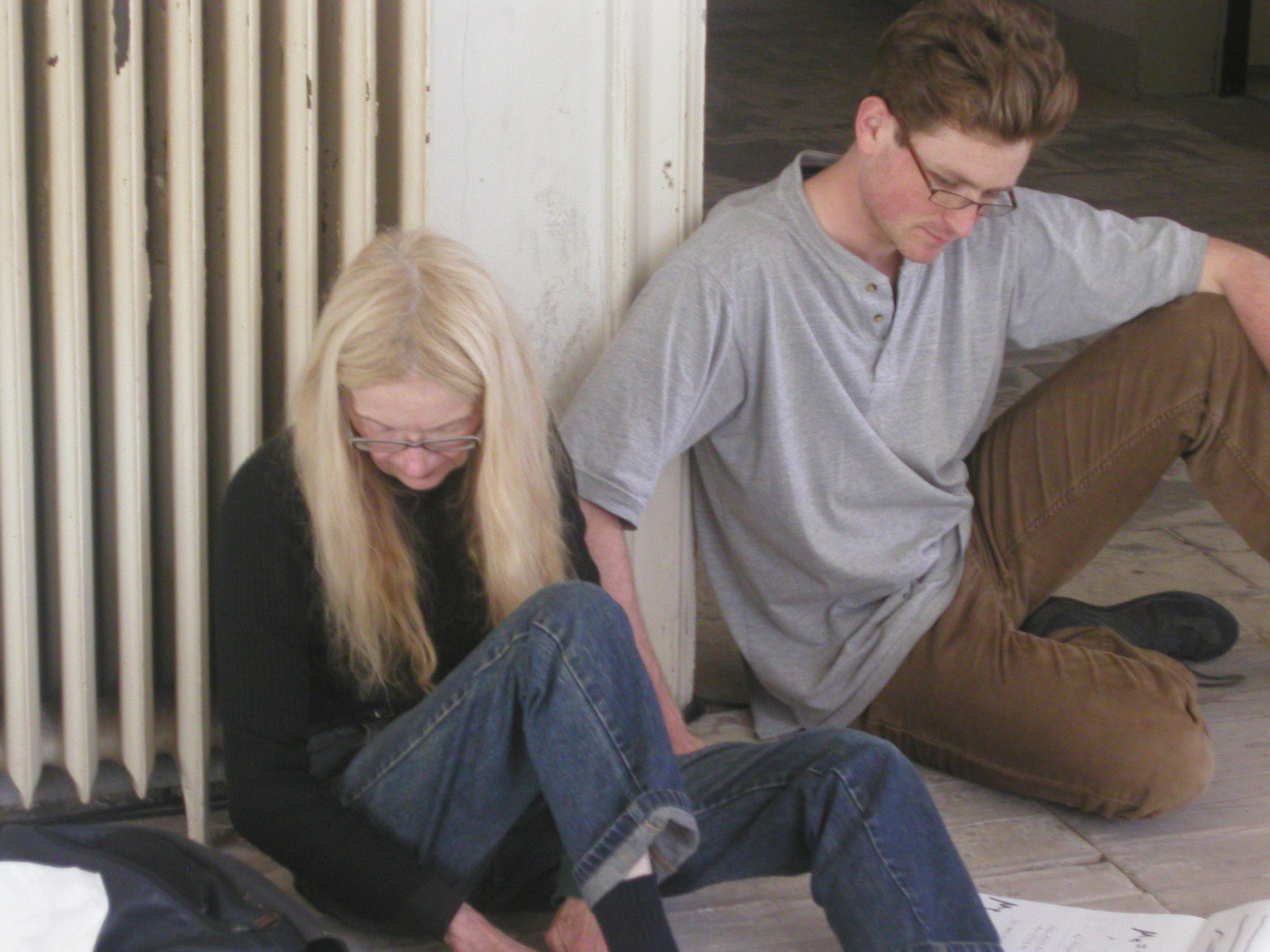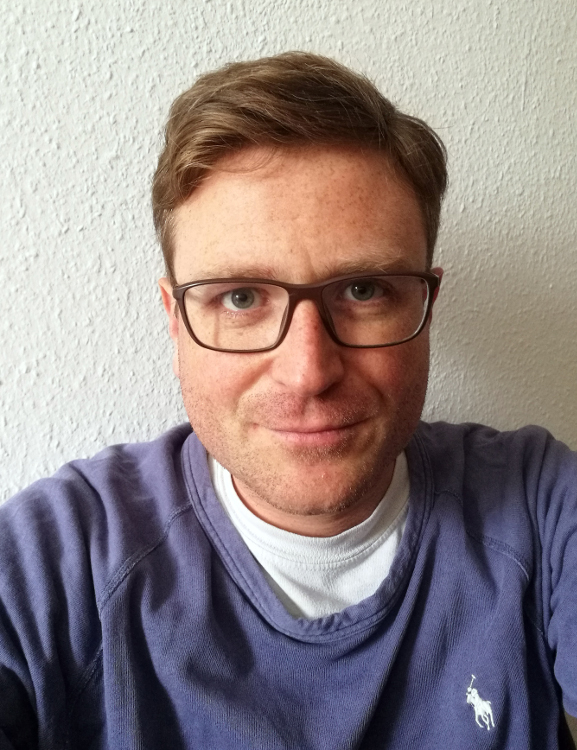Bill Dietz on

photograph by Eckehard Güther, 2006
I imagine her explosive joy working in Kingston before dawn in her one winterized room, curled up there under blankets listening to my father’s radio show on Christmas, scouring Google for the latest discoveries in gravitational wave theory & interviews with Karl Lagerfeld, cooking brown rice and cauliflower in her rice cooker; ecstatically, excruciatingly lonely –
& dismissively grunting at my romanticizing images.
Maryanne Amacher.
“i made the decision to follow Duchamp – rather than making many productions via John Cage. A few
acts! with potential to make some significant changes for the future rather than numerous clever ideas for new pieces and today’s concerts! more about all this later.”1
Maryanne Amacher is a composer of an undelineated lineage – a composer in the subjunctive. To call Maryanne Amacher a composer is to acknowledge the numbing equivalence of so many new musics as new classicals – the identity of David Lang’s The Little Match Girl Passion and Helmut Lachenmann’s Das Mädchen mit den Schwefelhölzern . Maryanne Amacher is a composer as Pierre Huyghe or Seth Price or Tino Sehgal aren’t easel painters. Maryanne Amacher is a 20th-century composer who worked through and beyond the 20th-century. Maryanne Amacher is the heroine of the post-Cagean adventure that never was.
To valorize Maryanne Amacher is not just to cry out against her death, but to fantasize the repositioning of an entire field away from the dead-end street of record/online-shop genre-labels (“experimental”) and into actuality. To praise Maryanne Amacher is not just to fantasize a life for her beyond near poverty and isolation, but to take the Cagean “discovery” of the listener as something more than an end point leading us back to the simulacra of the concert hall or, even worse, to the reverent reenactments of neo-avantgardes.
To begin with Cage: WAYS OF HEARING (as she so often writes). Not concerts or installations or “concert-installations”: sound characters, mini-sound series, sound screenings, sonic telepresence, dramatic narratives, … . “How sounds are perceived – what perceptual modes they trigger, where and how they exist for the listener – becomes as important in shaping an aural architecture as the sonic information: frequencies, tone colors, and rhythms.”2 Sound Characters, individual audio profiles with highly differentiated acoustic characteristic and with names like “The Fright”, “The Hardbeat Force”, “The Burning Gold”, and “God’s Big Noise”, literally interact (are overlaid, approach each other, overwhelm each other) within a given sonic scenario (maybe a mini-series staged in short – or not so short – consecutive segments over a period of days or weeks, or a sound screening – a narrative installation structure repeated regularly which visitors are meant to experience from beginning to end). These Characters not only articulate their specific acoustic characteristics in relation to those of the actual presentation space (that is, how sound might travel up & down its stairs, how it might slither through a certain wall or floor, how it might slowly waft down from far above as it did through the dome of the unheated Parochial Church late late one night in Berlin in 2006), they also articulate the virtual world of the scenario (“the audience walks into the ‘world of the story’ – enters the set”3) and its thematic foci (gravitational waves, muons, patented lifeforms, wreckage from the 20th century, etc). The work is not the sound (how irrelevant, the expectation of certain listeners that she produce “new” sound material for each public presentation), the work is not the technical setup (though her care for it and detail is unmatched), the work is not the ideas it might refer to (scientific discoveries, etc); the work is the non-place, both here and there, which it reveals within us – between us, our culturally programmed sensory apparatus, and the world.
“All of this was in contrast to most musical practice, where composing usually amounts to procedures of simply rearranging and modifying existent musical figures, that is other men’s tunes & giving them a personalized framework in time. (‘notes without ears’) Silicon composers are now achieving this faster and often better.”4
Indeed! No more notes without ears!
Let us instead put pearls in our ears & marvel at the immersive color of The Book’s interface! Let us send our secrets to the bottom of the Atlantic ocean & broadcast them through the former CIA/KGB submarine listening devices that still litter the ocean floor! Let us send Christian von Borries into space with an orchestra and conduct Wagner in zero gravity! Let us replicate atmospheres of our neighboring planets here on Earth, play our sounds within these, and observe the results! Let us re-imagine the possibility of electro-acoustic instrumental music as a space where performers & audience “meet neurophonically, in interaural space” – “acknowledging in musical composition the double function of ears and neuroanatomy in both receiving and emitting sound” – a space where “the audience…discovers themselves as AN INSTRUMENT JOINING THE PERFORMERS IN A REALIZATION OF THE COMPOSITION, a remarkable NEW RELATIONSHIP…”5
“Will rap music in the depths of the ocean sound like the underwater ‘drummers’ in Neal Stephenson’s The Diamond Age? How would pre-historic Mozart sound if we simulated characteristics of the Pre-Columbian atmosphere? How different is the sound of thunder on a mountain top? The music of Beethoven travelling through the oceanic waveguide, sounding through the world’s five oceans. What if thunder occurred underwater.”6
. . .
No wonder then when her works often garnered more excitement in the visual arts world and with the likes of Sonic Youth, Xiu Xiu, and the Yeah Yeah Yeahs. Which other composer could be a Guggenheim fellow one year, win the Golden Nica another, and perform at Woodstock ’94 the next?
And yet all of this, all of these visions, from pearls in the ears to submerged thunder, went unrealized. Lack of funding, no interest from presenters. Instead she’s asked again and again to play the festival circuit, concerts, gigs, to reduce her Sound Characters & Scenarios to, at best (& still nothing to scoff at) , vivid one-off performances. Or, in more recent years, along with the codification of “sound art” into an accepted art form with its own institutions and bureaucracy, she’s asked to make “installations” where she still must fight tooth and nail for anything beyond the genre’s “reduced” aesthetics. And again & again she’s called “difficult.” Difficult because she attempts more than adding another production to a venue’s roster. Difficult because she attempts more than the needs and requirements of professionalized, myspace genre compatible “experimental music.” Difficult because she attempts to realize her works on their own terms.
Which visual artist, which director, which designer, which scientist would be faulted, labeled “difficult” for this???
And yet – and thus (so is life in the New Music barrio), Maryanne Amacher remains a subjunctive composer. With so much of her generation’s contribution misunderstood into style, she was at least alone: never cowering into concert/instrumental bastardizations of herself, never resting on a single legacy, never letting her radicality slip in the attempt to grab onto a place in official music history. As the most generous artist I know, she remains, as Roland Barthes said of Beethoven, “a musician with a future.”
In my journal I find surprisingly little from the time of our first meeting; not much more than an odd notation of the phonetic pronunciation of her name (“Am-ah-shhé”) – all too much to write down?
On the last night of this first visit, hours after her performance, we return to her 21st floor suite in an old East German apartment building overlooking Berlin. We drink, she smokes. We fry onions and garlic on the small hotel hot-plate for pasta.
Some time in the morning, 4 or 5 am, we descend the tower in an elevator to meet her ride to the airport. Still pitch black out, just south of the city we can see a spectacular electrical storm breaking.
I can see her smiling face as the taxi drives into the storm.
Bill Dietz
Berlin, November 12th, 2009
1 From an email, December 26th, 2006.
2 Course syllabus, “Workshop for Electronic, Electroacoustic and Computer Music Composition”, Bard College, 2006. My emphasis.
3 Interview with Eliot Handelman, 1993.
4 “Thinking of Karlheinz Stockhausen”, Artforum, March 2008.
5 Unpublished “Concept Summary” for an unfinished work for the Kronos Quartet, 1992.
6 “Creating ‘Perceptual Geographies’ for Emerging Media: Multimodal Sensory Worlds”, unpublished project proposal, 2001.
Maryanne Amacher
Maryanne Amacher was born in 1938 in Kane, Pennsylvania. She enrolled in the University of Pennsylvania in 1955, where she studied with composer and theorist Constant Vauclain and composers George Rochberg and Karlheinz Stockhausen. Amacher went on to hold a series of fellowships – at the University of Illinois’ Experimental Music Studio (EMS), MIT’s Center for Advanced Visual Studies (CAVS), SUNY Buffalo, Radcliffe, the Capp Street Project in San Francisco and many others, including international fellowships. After meeting John Cage at the University of Illinois in 1968, she went on to collaborate with him on Lecture on the Weather (1975) and later created Close Up (1979), the sound component for Cage’s Empty Words (1974). In the late 1970s and early 1980s, Amacher developed ‘Music for Sound-Joined Rooms’ and ‘Mini Sound Series’, presentational models for how her subsequent work should be ‘staged’. During the early 1980s, Amacher also worked on the materials for a multi-part drama originally imagined for TV and radio simulcast called Intelligent Life. While never fully realised, Intelligent Life reveals much of Amacher’s thinking on music and the advancement of potentialities for future listeners, transcending the social and physiological limitations of music as we know it. In the 1990s, Amacher continued to work internationally, and in the US she was commissioned to compose a large-scale work for the Kronos Quartet, received a Guggenheim Fellowship, performed at Woodstock ’94, and released her first CD on Tzadik (Sound Characters, 1999). In the 2000s, she participated in the Whitney Biennial (2002), joined the faculty of the Milton Avery Graduate School of the Arts at Bard College, and released a second CD with Tzadik (Sound Characters vol. 2, 2008). In 2005 she received Ars Electronica Foundation’s Golden Nica, their highest honour. Amacher died in Kingston, NY after sustaining a head injury and a subsequent stroke during the summer of 2009.
Bill Dietz

Bill Dietz is a composer and writer, born in Arizona, and living in Berlin since 2003. Since 2012, he is co-chair of the Music/Sound Department in Bard College’s Milton Avery Graduate School of the Arts. His artistic and theoretical work centers on reception, specifically on listening – its histories, forms, and performance. The work is often presented in festivals, museums, and academic journals, but also in apartment buildings, magazines, and on public streets. Large-scale works have been realized in sites such as Le Corbusier’s “Cité radieuse” in Marseille, where he worked long-term with inhabitants of the apartment building to articulate social structures with sound, or along the entire length of “Im Stavenhof,” a street in Cologne along which he synchronized all participating inhabitants’ home stereos. From 2007 to 2015 he was the artistic director of the Berlin-based “Ensemble Zwischentöne,” organizing numerous festivals and concert series. In 2014 he co-founded the online magazine Ear │ Wave │ Event with Woody Sullender. He has published two books of listening scores – one on his “Tutorial Diversions” series, meant to be performed at home; and the other, made up of “concert pieces,” based on historical and contemporary audience behavior and staging.
